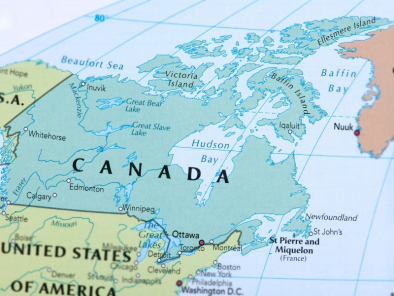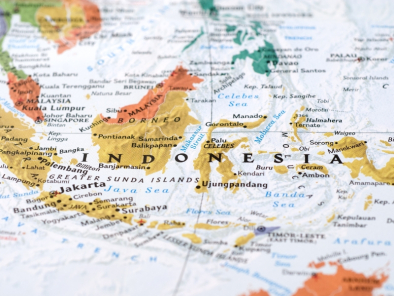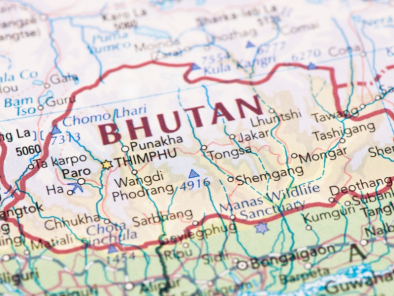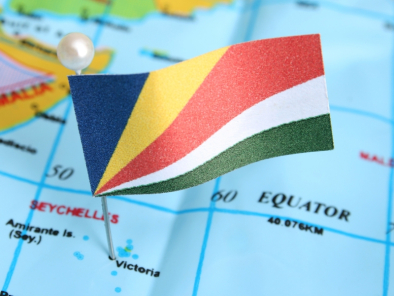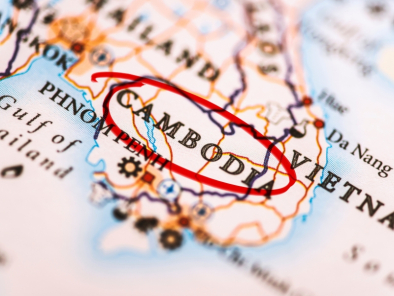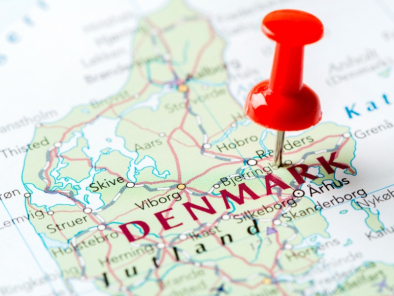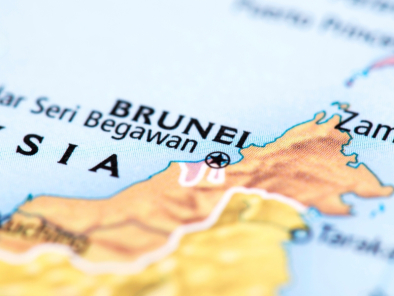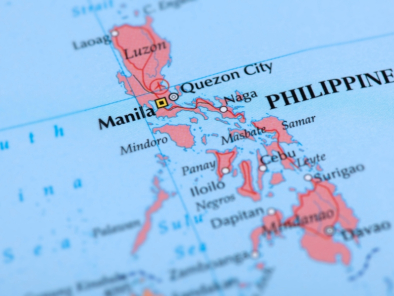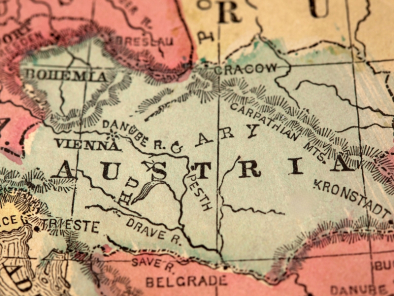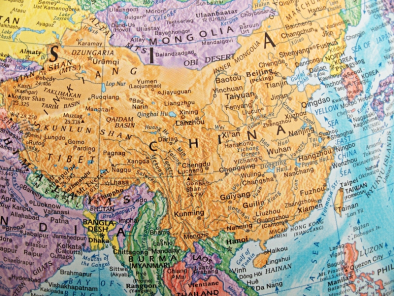CANADA
Canada is a country
of fantastic natural scenery and diverse attractions. With its numerous
national parks of untainted wilderness, you can easily find yourself literally
hundreds of miles away from anything, in an environment of unparalleled beauty.
Wherever
you decide to go in Canada,
though, you will never be far away from breathtaking natural beauty, combined
with an intriguing cultural heritage and friendly people.
VISA : The visa is to be obtained prior to arrival in the
country
REGIONS IN
BRIEF:
It
is divided into ten provinces plus three territories (Northwest, Yukon and Nunavut)
to the North.
1. British Columbia
2. Alberta
3. Saskatchewan
4. Manitoba
5. Ontario
6. Quebec
7. New Brunswick
8. Nova Scotia
9. Prince Edward Island
10. New
Foundland & Labrador
11. Yukon
12. Northwest Territories
13. Nunavut
HOW TO GET
THERE:
Canada's major
airline is Air Canada, providing air
transportation nationally and internationally to more than 150 destinations.
Smaller airlines such as West Jet, CanJet, Air Transat and Air North
also connect you to destinations across the country. Direct flights connect the
major cities of the globe with the larger Canadian airports, and frequent
connecting flights will help you get to any Canadian destination efficiently.
From
the U.S., direct flights
whisk you from most major air terminals to many Canadian cities including Victoria, Vancouver,
Calgary, Edmonton,
Regina, Winnipeg,
Thunder Bay, London,
Toronto, Ottawa,
Montréal, Québec City,
Saint John, Halifax
and Yarmouth.
Given
Canada's
immense size, and the relatively large distances between cities, it is a good
thing that the transport system is as efficient and cost-effective as it is.
GETTING
AROUND:
By Bus: A train or
bus pass represents good value while flying is your best bet for covering large
distances - particularly during winter when road conditions make long-distance
driving a poor choice. Canada’s
system of intercity bus routes spans the entire country. Greyhound is the
largest provider of intercity bus services in Canada with over 1,000 locations in
its network. Greyhound also offers
convenient cross-border links to many U.S. cities.
Buses
account for most of the fleets, but there are also streetcars, trolleys, sea
buses, and trains. Major Canadian cities that offer subway, metro or light
rapid transit service include Vancouver (SkyTrain), Calgary
(CTrain), Edmonton (LRT), Toronto (subway), Ottawa (O-Train) and
Montréal (metro).
One-way
fares average around CAD$2-$2.25 per adult and can be purchased from
subway/metro stations and some convenience stores. Cash fares can usually be
substituted for transit tickets. Some cities also offer flexible transit passes
so you can enjoy unlimited all-day, multi-day, or monthly travel.
By Train: Touring Canada by train
is one of the most elegant ways to see the country. Virtually all of Canada’s
major cities are connected by railroad and passenger rail travel is enjoying
renewed popularity. The schedules and routes offered are limited in many areas,
although if one is travelling in the Quebec-Windsor corridor, the train is
quite an efficient means of transport - the fast train from Montreal
to Toronto
takes about four hours.
One
can also use a Canrail pass, which
entitles you to 12 days of unlimited travel in Economy class during a 30-day
period. It will take several days to travel from coast to coast, but is a
fantastic way to see the country.
All
other rail tickets are sold in economy, senior, student or first class (known
as VIA 1) and are available at station ticket counters.
The
North America Rail
Pass is valid thoughout the United States and Canada. Varieties of ticket
permutations are available depending on the range and duration of your intended
route.
Scenic &
Luxury Rail Tours
Return
to the golden era of rail travel on a scenic rail tour to some of the most
spectacular and inaccessible terrain in the world—from glacial peaks to roaring
rivers. You'll savor the views from the panoramic dome cars, taste gourmet
meals in first-class style and even board a fleet of luxuriously appointed
1920s-era rail cars, conveyor of royalty, presidents and prime
From
gourmet service in the Rocky
Mountaineer’s custom-designed GoldLeaf Dome Coach to a trip back to a
gentler era on the vintage cars of the Royal Canadian Pacific, romance of the
rails is alive and well in Canada.
By Ferry: There are a
number of ferry services operating between the mainland and the various
outlying islands off the West and East
Coasts.
British
Columbia Ferry Corporation has a system running to Vancouver
Island from various locations along the West Coast.
Out
east in the Atlantic Provinces, there are
several ferry routes to Newfoundland, Prince Edward Island, and Grand Manan (New Brunswick).
CLIMATE:
Spring,
summer, and autumn are all ideal for touring, though if you want to ski you
will have to visit in winter or early spring. For campers and those who want to
visit the far north, the summer months of July and August are best. Summer is
also when many of the country's festivals take place.
Note
that the peak tourist season is
between Victoria Day (late May) and Labour Day (early September). Although
spring and autumn have fewer crowds, lower prices and a more relaxed pace than
the summer months, some visitor-oriented facilities, and attractions may be
closed during these shoulder seasons.
The
western and eastern coasts are both very wet, though much of the rain falls
during winter. In Saskatchewan, Manitoba and eastern Alberta the prairies are dry all year.
Canadian winters are long and hard: in more than two-thirds of the country, the
average January temperature is a shivering -18°C (-0.4°F). July and August are
the warmest months, when temperatures in the south are usually in the upper
20°Cs (low 80°Fs).
Throughout
most of Canada,
there are four distinct seasons of winter,
spring, summer and fall. However, the climate varies tremendously according
to where you go.
During
the course of the year, people in more southerly regions can easily experience
a temperature range of -30°C to 35°C, whereas the far North has an arctic
climate with frozen icecaps year-round.
Toronto, Vancouver and Victoria
all tend to have mild winters (Dec-Feb), while cities such as Ottawa,
Montreal and Edmonton are notorious for being extremely
cold and having a high snowfall but you will find temperatures can vary a lot,
even within one city.
Generally
speaking summer (Jun-Aug) can be very hot, while spring and autumn (Mar-Jun,
Sep-Nov) tend to be cool and comfortable and are usually regarded as the best
times to visit.
VOLTAGE:
110-120V 60Hz
COUNTRY
DIALING CODE:
+1
PUBLIC
TELEPHONE:
Most
public telephones are coin operated and cost approximately 25 cents per local
call, though this varies according to the province. Some, though not all,
telephones take phone cards, which can be bought at hotels and news stands.
LANGUAGES
SPOKEN:
English,
French
CURRENCY:
Canadian
Dollar (CAD), Symbol: C$
Paper
currency comes in denominations of five (blue), 10 (purple), 20 (green) and 50
(red). The brown C$100.00 bill and larger bills are less common and can be
difficult to change.
Canadian
coins come in denominations of one (penny), five (nickel), 10 (dime) and 25
(quarter) cent pieces. There are also the gold C$1.00 (loonie) and C$2.00
(toonie) pieces. The gold-coloured loonie features the loon, a common Canadian
water bird, while the two-toned toonie is jauntily decorated with a polar bear.
It's
best to change money at companies such as American Express or Thomas
Cook/Travelex, which specialise in international transactions. If you can't
find a money exchange office or booth, try a bank. American Express and Thomas
Cook are the best travellers cheques to have, and you should make sure they are
either in US or Canadian dollar denominations. Credit cards are widely
accepted, especially Visa, MasterCard and American Express.
You
will find ATMs in many grocery stores, malls, airports and so on, and most are
linked to the international networks, the most common being Cirrus, Plus, Star
and Maestro. You can also grab cash from an ATM if you use a major credit card
although this method tends to be more expensive because, in addition to a
service fee, you'll be charged interest immediately.
Be
aware that shops and businesses rarely accept personal cheques, but credit
cards are widely accepted (except perhaps in remote, rural communities where
cash is king). Still, you'll find it hard or impossible to rent a car, book a
room or order tickets over the phone without having a piece of plastic.
TIPPNG:
A
tip of 10-15% of a restaurant bill is appreciated.
PROVINCES AND
TERRITORIES:
BRITISH COLUMBIA:
Cities:
Vancouver, Victoria, Whistler,
Kelowna
Vancouver:
The
richest region in Canada, Vancouver looks every inch
the wealthy and sophisticated metropolis that its reputation promises. Of course,
besides the wealth of its inner city, reflected in the clean streets and fine
architecture, its natural setting is one of the most beautiful for anywhere in
the world.
Sitting
on the unspoiled Southwest coast of Canada, even in the heart of downtown you
are less than an hour away from whale-rich coastal waters and pristine beaches,
and just a couple of hours from the snow-covered mountains of Whistler and
Blackcomb, one of the world's most exclusive ski resorts. The city itself is
divided by the wide water of False Creek, a constant stream of boat traffic
that enlivens the city experience, especially so if you take the SeaBus that
weaves in and out of the larger vessels as it travels between downtown and North Vancouver.
Vancouver
International Airport
is located 14km south of downtown, technically in Richmond
The
Airporter Bus runs from the airport to major hotels in downtown as well as
Canada Place and the train station from 06h30-23h00 each day. The Airporter
runs two routes, dropping off at different hotels
Buses,
sky train, Taxis are not overly numerous in Vancouver. You can usually catch them from
ranks outside malls and larger attractions or hotels. If a taxi has its light
on then it is available for hire and you can flag it down. Note that Vancouver's congestion
causes problems at peak hours and you might be quicker trusting to the SkyTrain
and your own two legs rather than a taxi.
MUST SEES:
Stanley Park:
The
verdant heart of this thriving city, Stanley
Park is Vancouver's signature attraction. With over
1,000 acres of greenery, most of it dense West Coast forest, this is one of the
largest urban parks in North America and the
perfect foil to the big city. The sea wall that completely encircles the park
is a popular promenade; you can walk it in around two hours or hire a bicycle
or roller-blades
Vancouver Aquarium Marine Science Centre:
Located
in Stanley Park,
the aquarium is home to more than 60,000 creatures from the Arctic, Amazon
tropics, and Canada's
West Coast. The aquarium is most famous for its beluga whales, the rare white
whales native to the Arctic.
Open:
daily 0930-1900 (Jun-Aug); 1000-1730 (Sep-Jun)
Capilano Suspension Bridge:
Possibly
the world's most popular toll bridge, spanning the Capilano
River in North Vancouver this unlikely sounding
attraction sees over three-quarters of a million visitors each year. Swaying 70
metres (230ft) above the canyon cut by the river, the narrow skyway was originally
constructed in the 1880s by an intrepid Scottish engineer who merely used cedar
planks and hemp rope.
Open:
daily 09h00-17h00 (extended opening hours during the summer).
Vancouver Museum, Vancouver Maritime Museum
Granville Island:
Once
an industrial wasteland Granville Island was transformed in a late-20th-century
regeneration scheme to become one of the most popular leisure spots in Vancouver. With bohemian
shops and stalls in its famous market and restaurants and cafés literally
everywhere today, it's a honeypot for both residents and tourists alike.
Historic
Gastown and the Steam Clock:
Gastown
is one of the oldest suburbs of Vancouver.
Today it has been restored to appear much as it must have done towards the end
of the 19th century. Its cobbled streets and traditional warehouses were
repaired and today are home to modern craft type shops and bohemian cafésand
bars.
Grouse Mountain:
Grouse Mountain towers above Vancouver to the north and it is well worth
making the journey out to take advantage of the attractions offered by the peak
and its surroundings. From the car park at the bottom, you can ride the Grouse
Mountain Skyride gondola nearly 3,000ft to the peak. On the way up and at the
top you experience an unparalleled panoramic view of the city and harbour laid
out below you.
Open:
09h00-22h00
Pacific
Science Centre:
This
award-winning attraction offers the chance to journey through the cosmos
without ever leaving terra firma. There are numerous things to see and do, from
seeing the night sky above Vancouver
in the planetarium to feeling as if you are travelling in space in the full
motion spacecraft simulator
ALBERTA:
Cities:
Calgary, Jasper, Banff
Calgary is an
attractive and dynamic city situated on the banks of the Bow
River and close to Alberta's
majestic Rocky Mountains. Calgary
is a cosmopolitan city set in the rolling foothills of the western province of Alberta,
which is located directly north of the State of Montana,
USA.
The
majestic Canadian Rockies are less than an hour's drive from the city centre of
Calgary. Calgary's International
Airport is just a 20
-minute drive, (17 kilometers) from the city's centre. Excellent,
well-maintained highways lead into Calgary from
the United States and other
parts of Canada.
Calgary is known for
its sunny skies and a moderate four-season climate making it a travel
destination for all ages. Alberta receives
more hours of sunshine yearly than any other province in Canada. These
wide-open blue skies and moderate climate beckons year-round outdoor
enthusiasts from golfing to hiking, fishing to mountain biking, skiing to
dog-sledding.
The Calgary Stampede:
The
Calgary Stampede is undoubtedly Calgary's
best-known visitor attraction. This event, featuring a large parade and
world-class rodeo, draws more than a million people each year. Each year, millions of visitors from around
the world come to Calgary
to partake in the annual event, the Calgary Stampede and Exhibition. As Calgary's most popular
tourist attraction, 'the greatest outdoor show on earth' features a real rodeo,
a midway (amusement park), concerts, chuckwagon races and more. The city of Calgary is transformed for
10 days into town celebrating the cowboy culture. Visitors will enjoy the
atmosphere and always friendly attitude of the locals. Calgary Stampede
festivites begin with a downtown parade July 4.
Canada Olympic Park:
The
host city of the 1988 Winter Olympic Games takes pride in its sporting legacy.
Canada Olympic Park is a multi-purpose athletic facility designed for skiing,
snowboarding, bobsleigh and luge during the winter and mountain biking during
the summer. The Pengrowth Saddledome is the home of the NHL's Calgary Flames,
as well as being the venue for countless events and concerts throughout the
year.
Other
attractions, including the Glenbow Museum, Calgary
Tower and Eau Claire Market are other great places to
visit year-round.
JASPER:
A
quiet spot in the very heart of the Canadian Rockies, the little resort town of
Jasper Alberta
is a favorite spot to all who experience it. Explore these pages to discover
the wealth of services and attractions available to make your trip to the
Canadian Rockies memorable.
Deep
in the Alberta Rockies, peaks crown the horizon in every direction. The vast majorities
are pristine and will remain that way, preserved under the aegis of Canada's
national parks system. Mountain sheep, bears, wolves, elk, and mountain goats
have a secure home here, and can often be seen when simply driving down the
road. To improve the chance of spotting a Grizzly bear, adventure seekers can
opt for a hiking tour or explore the surrounding wilderness on horseback. But
even from inside the car, the mountain views are spectacular. In particular,
the road south of Jasper to Lake Louise is
renowned for its breathtaking vistas. About halfway down, motorists often stop
at the Columbia Icefield to view a still mighty but receding glacier, part of
the Icefields Parkway
and Eastern Slopes region. In the town of Jasper
itself, visitors enjoy a peaceful small-town atmosphere, while chalets,
B&Bs and famous Fairmont Jasper Park Lodge offer a wide range of
accommodation often in building reflecting a distinct alpine architecture.
Lake Louise:
The
lake owes its colour to fine particles suspended in the glacier waters, but few
visitors at the world famous Fairmount Chateau Lake Louise are thinking of
hydrology as they look out over the waters from the luxury hotel. Downslope from
the Chateau, the town of Lake Louise
has its own charm. Small but well-appointed with restaurants, accommodation and
stores, the townsite is an ideal getaway destination in summer when trail
riding, hiking, rafting and mountain biking predominate.Wildlife is also a
major draw with elk commonly sighted from the road and even the occasional
bear.
Jasper National Park:
Is
the largest and most northerly Canadian rocky mountain national park, part of a
spectacular World Heritage Site. It is located in the province
of Alberta, to the north of Banff National Park
and west of the city of Edmonton..
Comprised of delicate and carefully protected ecosystems, Jasper's scenery is
none-the-less rugged and mountainous. In this special corner of Canada you can thrill to the thunder of Sunwapta Falls, enjoy the serene beauty
of Mount Edith
Cavell, connect with nature along 1,000-plus kilometres of
trails, experience Athabasca Glacier
up close or just resign yourself to a relaxing soak in Miette Hotsprings. The park includes the glaciers of the Columbia Icefield, hot springs, lakes,
waterfalls and, of course, mountains. Wildlife in the park include elk,
caribou, moose, mule deer, white-tailed deer, mountain goat, bighorn sheep,
grizzly bear, black bear, be The largest glacial fed lake in the Canadian
Rockies is found in Jasper National Park.
Maligne Lake is 22 kilometres long and 97
metres deep. Aver, Rocky Mountain
pika, hoary marmot and caribou
Jasper National Park is situated 370 km (192 mi) west of Edmonton, 404 km (256 mi) northwest of Calgary
and 805 km (500 mi) northeast of Vancouver
Both
Vancouver and Edmonton have regular Greyhound bus service
to Jasper
Via
Rail has regular train service to Jasper via Edmonton
and Vancouver
Banff National park:
A
rich history of the park dates back thousands of years before a 26 square
kilometre national reserve was created around hot sulphur springs discovered
near Banff.
Today, the area has grown to 6641 square kilometres known worldwide as Banff National
Park. Part of a complex chain of national and
provincial parks and wilderness areas which together total 5 million acres set
aside for posterity, it is one of the worlds largest protected domains. Vast
glaciers rimmed with ice, huge forests, and emerald green lakes exhibit some of
the most majestic mountain scenery on earth. Bears, wolves and a host of other
magnificent animals and birds extend their range throughout the hinterland.
Discover
a landscape rich in wildlife and history against a backdrop of glaciers and
towering mountain peaks.
Discover
Banff- The world famous resort town of Banff is located in the centre of Banff
National Park, flanked on all sides by
Alberta's Rocky Mountains.
Countless visitors travel to the town each year, lured by the cozy resorts,
unparalleled recreational opportunities and some of Canada's finest shopping and
dining. Sunshine Village Ski Resort and Norquay are home
to deep powder, deluxe mountain lodgings and some of the world's largest ski
and snowboard events. The national park itself offers opportunities for
mountain camping, hiking excursions and wildlife viewing. Banff has also built a reputation as a
popular weekend retreat destination during the warm summer months. With
renowned restaurants, decadent spas, eclectic boutiques and bustling nightclubs
offering something for any taste, Banff
has insured that guests will continue to visit the town year round..of valleys,
mountains, glaciers, forests, meadows and rivers, Banff National Park
is one of the world's premier destination spots.
Distances: Banff to Calgary
128 km
Banff
to Jasper 287 km
Banff
to Vancouver
850 km
There
is direct bus service connecting downtown Calgary
and the Calgary International
Airport with the town of Banff and village
of Lake Louise. There is
also bus service connecting Banff and Lake
Louise with the town of Jasper.
Taxi service is available in Banff and Lake Louise. Several guiding companies also offer shuttle
service to trailheads.
QUEBEC:
Cities: Montreal, Quebec
City
Montreal:
Great
French speaking metropolis entertains her visitors with some of the continent's
most vibrant nightlife, stylish shopping and historic buildings. Add to this
mix Canada's best museums
and galleries and the largest programme of festivals in the country and you
will understand why Montreal is an essential
stop on any trip to North America's East
Coast.
Montreal Dorval Airport (also known as Pierre Elliott
Trudeau) is located 25km west of downtown Montreal.
The city is also served by Mirabel Airport,
some 50km north-west from the city, with some charter flights landing here.
By
Taxi: Taxis are located outside the
arrivals hall.
By Buses: L'Aerobus,
Montreal's airport shuttle bus service runs every half hour from the arrivals
terminal at Dorval to downtown Montreal central bus station and on to the
Aerobus station. Services start at 05h00 and finish at 01h00. The journey takes
approximately 45 minutes, dropping off at major downtown hotels. Tickets may be
purchased from the above locations and from the kiosk outside the arrivals
terminal or from the driver.
Dorval airport
is also connected by STM (public transport) services. Bus 201 direction Montreal goes to Dorval
bus station where you can change for bus 211 for Lionel Groulx metro station
(located downtown).
Montreal public transport is run by STM (Societe
de Transports de Montreal).
STM operates an excellent four line Metro (subway) and a network of buses
across the whole of Montreal
Island. A single ticket
can be purchased with exact change from bus drivers and Metro stations. This
ticket is valid for one continuous journey by bus and metro.
Vieux Montreal:
The
narrow cobbled streets of the old town are a picturesque reminder of Montreal's history as a
thriving trading post. Quaint cafés and stylish boutiques are attractively
located in historic buildings whose interiors have been stripped down to reveal
the ancient brick. Horse-drawn carriages, called Calèches, are a popular way to soak up the atmosphere of the old
town. They can be found waiting outside the two architectural highlights of the
district, the stunning Cathedral of
Notre-Dame and the gleaming dome of Bonsecours
Market.
The 2.5km area of the old port was converted into a recreational park. Visitors
in summer can stroll along the riverside watching the many outdoor performers
who gather here. Winter sees an outdoor skating rink here, while the Science
Centre and the IMAX Cinema offer family entertainment year round whatever the
weather.
Notre Dame
Basilica:
The
basilica was constructed as recently as 1824, in Gothic revival style. The real
beauty of the building is in its magnificent interior. The ceiling is a
striking blue, adorned with gold stars. The stained glass is as good as any
found in Europe and the religious artwork
takes its inspiration from the Renaissance. Of particular note is the stunning
altarpiece.
In season a spectacular Sound and Light show, reflects the cathedral off to
stunning effect, although few noises can compete with the deep voice of the
Gros Bourdon, the West
Tower's single bell. The
scale and beauty of the cathedral is a testimony to the Catholic devotion of
the people of Quebec, and it has deservedly
become famous throughout North America as one
of the defining places of worship for the faith. Pope John Paul gave mass here
in 1984, and the State Funeral of Canadian Prime Minister Pierre Elliot Trudeau
was held here in 2000.
Open:
daily 08h00-16h30.
Pointe-A-Calliere
- Montreal Museum of Archaeology And History
This
award-winning museum complex is built on one of the earliest settlements in Montreal. The museum is
divided into several different sections that an audio guide allows you to tour
by yourself. Visitors follow a suggested route and staff members are on hand to
give further explanations of the exhibits should you need them.
Open: Mon-Fri 10h00-18h00, Sat-Sun 11h00-18h00 (Closed on Mondays, and at 17h00
in winter).
Bonsecours
Market:
Crowned
by a 100ft-silver dome, this heritage building has been a Montreal landmark
since its construction by the British in 1844. It is built on the remains of a
succession of previous buildings, notably the home of the last French Intendent
of Canada, and a 19th-century theatre that once hosted a performance by Charles
Dickens in person.
During its lifespan the current building has served as city hall, and even
briefly as Canada's
Parliament, before being converted solely into a public marketplace. Today it
primarily caters to tourists offering a range of souvenir stalls, art shops and
pleasant café/restaurants. It's a popular spot to pick up presents for those
back home.
Mount
Royal Park This is Montreal's
largest park, lying on and around the "mountain" that gave the city
its name. The highlight of the park for visitors is the spectacular viewpoint -
perched near the summit - that offers an unparalleled view over downtown Montreal. It's the best
photo opportunity in town.
The Biodome:
The
Biodome is one of Montreal's
most unusual attractions, but continues to prove one of the city's most
popular. Housed under the roof of the former Olympic Velodrome, the Biodome
houses four ecosystems native to the American continent. Visitors walk straight
into the heart of the Amazon rainforest, complete with howling monkeys, exotic
birds, alligators and an ever-elusive sloth. The next room recreates the
deciduous Laurentian forest, native to Quebec
with an enormous beaver dam centrepiece.
The gallery offers an insight into the underwater world of the mighty St
Lawrence River before sending you shivering into the Arctic
to watch the playful antics of the resident penguin colony.
Open: Tue-Sun 09h00-17h00 (Open Mondays and until 18h00 in summer months).
Other
sightseeings in Montreal: McCord Museum of Canadian History, Olympic Park
Botanical Garden.
ONTARIO:
Cities: Toronto
TORONTO:
With
its distinctive skyline, punctuated by the exclamation mark of the CN Tower, Toronto sits on the shores of picturesque Lake Ontario,
a shimmering jewel of a city.
Against
the backdrop of the lake the city seems somewhat incongruous, and when pictured
against the vast expanses of wilderness that form the majority of the rest of Canada
this thoroughly modern city does seem something of an anomaly. But explore
further and you'll find a city every bit as rewarding and appreciable as anything
the rest of Canada
has to offer.
The
largest and one of the liveliest cities in Canada
it is hard to believe that Toronto
for a long time had a reputation as something of a conservative, sleepy
backwater of the British colonial empire. With a predominantly puritan
population, through its early years the city was nothing like the energetic
party town it is today. The colonial influence can still be seen in the
administrative buildings of Old York Town and the
Edwardian and Victorian buildings that survive in some of the city districts,
notably the bohemian enclave of Cabbagetown.
Despite this venerable heritage, Toronto
has most definitely relaxed its stiff-upper lip into a welcoming smile.
The
city is a lot more culturally and ethnically diverse than anywhere else in Canada. This is
reflected in the many cultural quarters where you can get the flavours of the
Far East, Africa or Europe within a couple of
blocks of each other.
Royal Ontario museum:
The
ROM is Canada's
largest museum of culture and nature and a must-see for everyone. Permanent
exhibits cover areas as diverse as Ancient Greece, an Egyptian mummy, native
Canadian history, dinosaurs, a fabulous breakdown of precious gemstones, and a
super section on how the Earth was formed that is designed for children but
great for adults as well.
Throughout
the year, concerts and special cultural theme nights are held on Friday
evenings and Sunday afternoons. Located at 100 Queen's Park, at the corner of Bloor St West and
Avenue Road, by the Museum subway stop on the Yonge-University line.
Open:
Mon-Thu & Sat-Sun 10h00-18h00; Fri 10h00-21h30.
Art Gallery of
Ontario
The
superb AGO is the premier art collection in Toronto. The museum houses permanent
exhibitions that range from European Old Masters to the early-20th-century Toronto collective, the
Group of Seven, who defined a distinctive Canadian art movement of the period.
There is also a large body of international modern pieces, including the
world's largest public collection of works by British sculptor Henry Moore.
Open:
Wed-Fri 10h00-21h00; Sat-Sun 10h00-17h30.
CN Tower:
This
landmark is how the city of Toronto's
skyline is recognized the world over and it's impossible to miss on a trip to
the city. One of the world's tallest buildings it reaches 553.3m (1815ft 5in)
into the air, and offers a fabulous view of the city on a fine day.
The
ride up and down the glass elevator and jumping on the glass floor in the
observation tower is a lot of fun, but not recommended for those scared of
heights. There is a revolving restaurant that allows you to sit and enjoy the
full 360° view of the city as you dine. An arcade, theatre, and gift shop
occupies the base.
Open:
Sun-Thu 09h00-22h00; Fri-Sat 09h00-22h30
Toronto islands:
The
Islands offer a tranquil escape from the bustle of the city and the view of Toronto back across the
sound is rendered rather surreal due to the rural quiet of the islands.
The
Toronto Islands have no roads, are accessible
only by ferry and are thus the perfect escape for a picnic and a leisurely
stroll. Some of what you will find includes volleyball and tennis courts, a
park, beaches and numerous snack bars. But you should be forewarned of the
nudist beach before you start roaming around! If you don't fancy walking, bring
your own in-line skates or rent a bicycle on the island.
Harbourfront:
The
Toronto Ferry Dock is located at the
foot of Bay Street
and Queens Quay, just west of the Weston Harbour Castle Hotel. Take the
streetcar or bus to Queen's Quay. Ferries take you to Ward's Island, Centre Island
or Hanlan's Point
The
water's edge of Lake
Ontario offers so much
when the weather warms up (April-October). Visitors and locals alike can be
found strolling down the waterside promenade, taking time to stop in the
galleries, theatres, craft boutiques, restaurants, and cafés.
There
are a number of options for making the most out of the waterfront; you can sign
up for sailing lessons, roller blade along the boardwalk or simply soak up the
relaxed ambience. Weekends really draw in the crowds with amazing craft kiosks
and free open-air cultural concerts and exhibitions.
The Beaches:
The
Beaches is a laid-back neighborhood filled with restaurants and bars, fun shops
and quaint antique stores lining the waterfront of Lake Ontario.
From
May to October, you will find all sorts of people in-line skating, biking,
jogging, and walking their dogs along the boardwalk while others frolic in the
sand and a few fly enormous kites. During long weekends between May and
September, there are class-act free pop and rock concerts and in July you will
find the free Jazz Festival in Kew
Gardens.
To
get to the Beaches, take the Queen St streetcar east about 20 minutes to Woodbine Ave
Excursions
from Toronto
EXCURSIONS:
Niagara Falls:
A
short distance outside the city you will find Niagara Falls in its entire touristy
splendour. It is an easy drive or inexpensive bus ride from Toronto and you'll be rewarded with one of
nature's most powerful spectacles. Niagara is
especially impressive at night-time when the falls are floodlit.
Get the best out of Niagara by taking one of the boat cruises right into the
horseshoe, where you can feel the spray from the thousands of gallons of water
that continuously crash down over the precipice. You will get wet, and the
noise is deafening, but the views make it worthwhile.
Niagara-on-the-Lake nearby is a beautifully quaint small town in the heart of a
region that boasts some of the world's best wineries.
Kingston:
Kingston, the "Limestone City",
is a beautiful historic town 250km from Toronto.
At one time this, the oldest city in Ontario,
was Canada's
capital. It is now renowned as a historical and cultural centre, where three
centuries of Canadian tradition is preserved.
There are some excellent examples of Victorian architecture still existent in
the city centre, and many of them are open to the public. What Kingston
is most famous for though, is the fabulous paddles teamers that leave the port
for the Thousand Islands that sit at the mouth of the St
Lawrence river. Taking a cruise is a definite must on a visit
here.
The nearby Fort Henry was built during the war against
the Americans in 1812 and is well worth a visit. The Fort Henry Guard, still
resplendent in their British "Redcoat" uniforms recreate the real
atmosphere of a 19th-century military garrison, with formal marching and cannon
displays
Algonquin National Park:
Three
hours by road from Toronto, Algonquin National Park
is a vast expanse of protected Canadian wilderness. Covering 7700 square
kilometres as you might expect the park contains a great diversity of
topography, flora and fauna.
Canoeing down one of the many rivers is a popular way to explore areas of the
park, and the lucky few will see some of the more elusive inhabitants of the
park which include the giant Canadian moose and wolves. Cycling or hiking
trails explore the park further, and it is possible to camp deep in the
interior, far from civilisation.
For the less adventurous, the Parkway
Corridor, along Highway 60, which runs across the Southwest of the park, is
lined with campsites that give you a taste of Canada's broad wilds, without
venturing too far from the beaten track.
SHOPPING:
North
America in general tends to be cheaper than Europe
for many items, especially fashion. Casual and sportswear tend to dominate the
scene, and you will find some good buys if you are looking for fleeces, jeans,
or trainers. Roots, the Canadian equivalent of Gap, sell men and women's
clothes and shoes as well as household goods in some larger branches. MAC
cosmetics, founded in Toronto and a favorite in
the fashion industry, can be found throughout the country and tend to be
cheaper in Canada
than elsewhere.
For
something quintessentially Canadian, pick up a "toque" (pronounced
"took" with a long "O" sound, rhyming with "fluke'.).
This is a pull-on winter hat, which will keep out the cold when you're
venturing out into the freezing cold Canadian winter.
In
many areas, you will find talented local artists. Keep an eye out for native
Canadian artifacts: you can pick up some unique knick-knacks, which make ideal
souvenirs, such as dream catchers or sandstone carvings. Traditional jewellery
and clothing, such as moccasins, are also worth looking out for.
To
take a taste of Canada
home with you, pick up a Canadian bottle of wine, beer from a local brewery or
some smoked salmon.
Of
course there is a plethora of flags, badges and pens with maple leaves
emblazoned on them if you want people to have no doubt as to where you've been.
To be a little more original, many souvenir shops also sell T-shirts, key rings
and the like, decorated with Mounties, moose or beavers
Shops
are generally open Mon-Sat from 10h00-18h00. Some shops are open on Sun but for
a shorter period. In major cities supermarkets are usually open from
07h30-21h00.
TAX REFUND:
There
is a national tax, the GST (Goods & Service Tax) of 7% that is charged
across the country except for the purchase of basic groceries. Each province
then charges an additional 6% to 14% PST (Provincial Sales Tax) along with the
GST. The Eastern provinces have an amalgamated Sales Tax of 15% while every
other province from Quebec
west will break down the GST and PST for you. So the price you see is rarely
the total amount. Expect the final prince at shops, bars and restaurants to be
approximately 15% more than that stated.
You
can obtain a GST refund on purchases taken out of the country and on short-term
hotel accommodation. Rebate forms, which, along with all your original
receipts, must be submitted within 60 days of leaving Canada, are available from some
shops, Customs or the Canadian tax office. To be eligible for a refund,
receipts must total at least CAD200.
Some
duty-free shops issue an instant refund of up to CAD500 cash on leaving the
country and most provinces do not tax goods that are shipped directly out of
the country by the retailer
